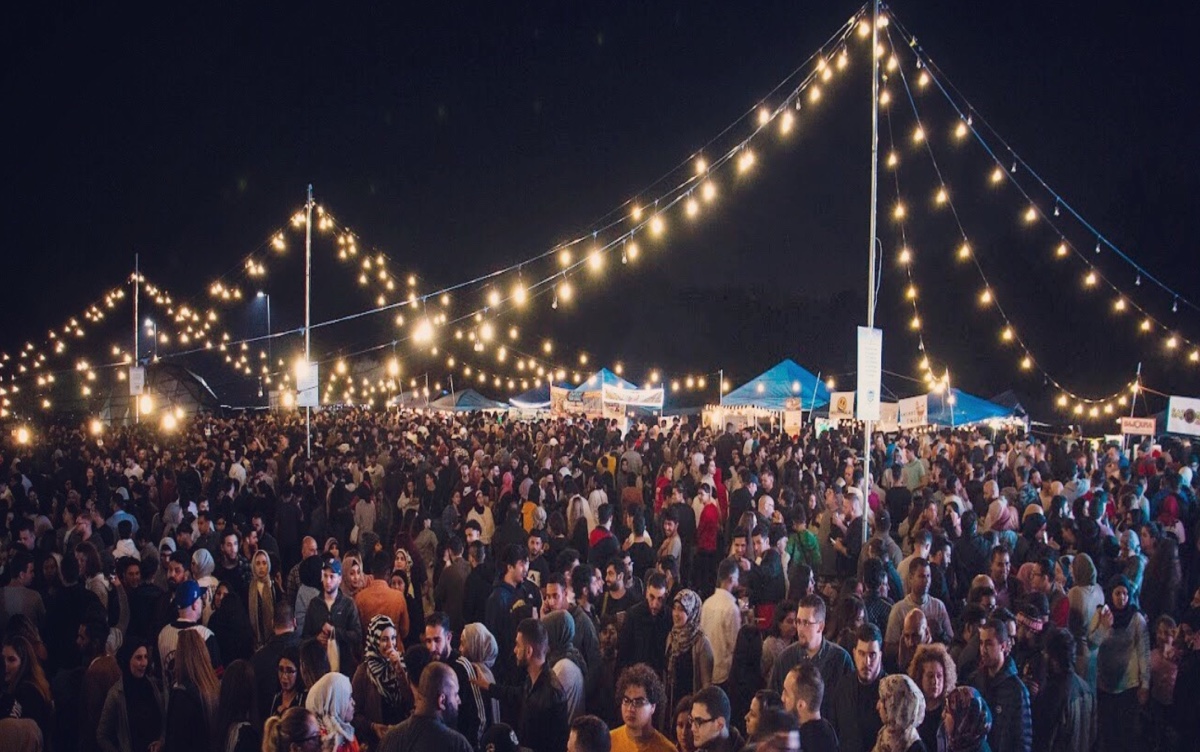Hajj: Sea of Humanity
By Siraj Wahab in Arafat, Arab News,
Two places stand in great prominence on the wide plains of Arafat. One is the gigantic Namira Mosque, where the Haj sermon is given by the grand mufti. The other is the Mount of Mercy or Jabal Al-Rahma. It is from this place that Prophet Mohammad, peace be upon him, delivered his all-encompassing farewell sermon 1,425 years ago. To this day, the sermon serves as the guiding light for Muslims and mankind.
Jabal Al-Rahma is a granite hill. At the peak of the 70-meter hill is a platform, in the center of which is a white pillar which can be seen from far and near. The hill has a cluster of boulders and there are deep crevices in it. Some of the boulders are perched precariously. The vulnerable boulders have been artificially reinforced and supported by iron rods.
On the Day of Arafat, the hill becomes white with the garments of thousands of pilgrims who climb the hill in an effort to be as close to the white pillar on the top as possible. The scene on the Plains of Arafat from the hilltop is dramatic. You look at a veritable sea of humanity.
On Friday, a visit to the Jabal Al-Rahma was among the highlights of the Arab News coverage. The mount is ringed by security forces. They are very polite. You cannot get on to the mount from any side. The security forces have earmarked an entry point and an exit point for the purpose of management. Hundreds of pilgrims were on the mount, occupying every available space. They were reciting verses from the Holy Qur’an with tears rolling down their cheeks. Some were sleeping with their prayer beads in their hands. They seemed tired after the long journey. Some pilgrims had their hands stretched out in prayers and supplications.
At the foot of the Jabal Al-Rahma, the government has erected big billboards stating that the Prophet did not climb the mount and that it is not necessary to climb it. Pilgrims have a tendency to scribble the names of their loved ones on the rocks and on the white pillar on the top. The instructions clearly state that this should not be done. The instructions are in many languages, including English.
The scene at Jabal Al-Rahma is indescribable. What moves one to tears are the fragile old women trying to climb the mount. “You could have prayed anywhere; why do you have to climb the Jabal Al-Rahma,†Arab News asked an elderly pilgrim from Morocco. Her name was Fatima Jalloul and her face was furrowed. “I want to take memories of this place and want to share them with my grandchildren. I am storing all these images in my mind,†she told us with pious candor.
For Fatima, coming to the Haj is a dream come true. “In Morocco, the pilgrims are selected by drawing lots. I was among the lucky ones to be here. You cannot imagine my happiness,†she said. Despite the hardships, she beamed with a wide angelic smile.
When it comes to describing the scene at Arafat, no one has done better than Lady Evelyn Cobbold, the Englishwoman who became a Muslim and took the name of Zainab. Every year, Haj reporters recall her words to describe the standing at Arafat — wuqoof in Arabic.
“It would require a master pen to describe the scene, poignant in its intensity, of that great concourse of humanity of which I was one small unit, completely lost to their surroundings in a fervor of religious enthusiasm,†she wrote in her Haj journal decades ago. “Many of the pilgrims had tears streaming down their cheeks; others raised their faces to the sky that had witnessed this drama so often in the past centuries. The shining eyes, the passionate appeals, the pitiful hands outstretched in prayer moved me in a way that nothing had ever done before, and I felt caught up in a strong wave of spiritual exaltation. I was one with the rest of the pilgrims in a sublime act of complete surrender to the Supreme Will which is Islam.â€
16-42












2014
927 views
views
0
comments